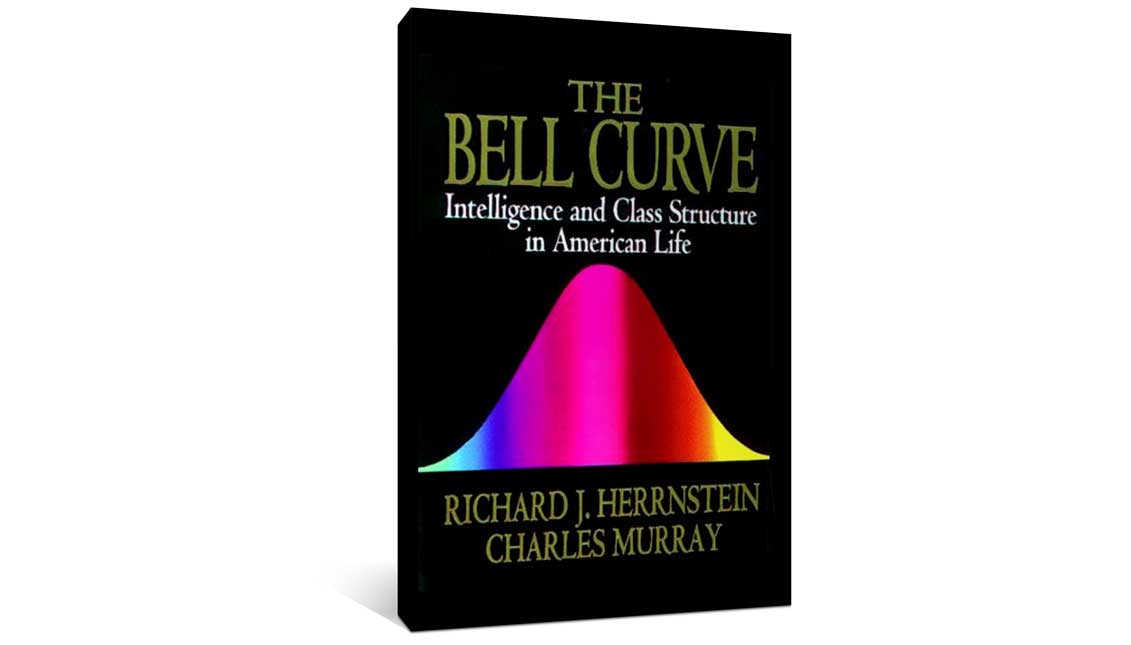
[OP-ED]: By all means, take issue with ‘The Bell Curve.’ But read it first
MORE IN THIS SECTION
It returned last March when Murray was chased away by angry students from Middlebury College in Vermont on the grounds that his speech, centering on his magnificent 2012 book “Coming Apart,” about the fracturing of American society along education and income lines, was illegitimate because his earlier work on intelligence “proved” that Murray is a white supremacist.
My kneejerk reaction was to buy “The Bell Curve” and read it -- an act I’m confident few of the book’s vociferous detractors have done, as it is extremely long and dense.
“The Bell Curve” triggered such an uproar at Middlebury that not only was Murray shouted down, but a female professor who was to interview him onstage sustained a concussion from the violent actions of the students (over five-dozen of whom were disciplined by the college).
But even a waiting-at-the-doctor’s-office reading of “The Bell Curve” bears it out as a fair accounting of dissenting opinions on the history, processes for measuring, and analysis of data about human intelligence and its correlation to human genes.
Political contexts are laid out for novices to the field of intelligence research, and there are extensive discussions about systemic injustices based on race and the challenges that the financially disadvantaged face. Concerns over whether the instruments used in assessing intelligence are tainted by cultural bias are investigated in compelling detail across a variety of well-known standardized tests like the SAT.
“The technical literature is again clear. In study after study of the leading tests, the hypothesis that the [black/white] difference is caused by questions with cultural content has been contradicted by the facts,” reads one section. “Items that the average white test taker finds easy relative to other items, the average black test taker does too; the same is true for items that the average white and black find difficult.”
It’s a shame that the controversy regarding “The Bell Curve” centered on the book’s delineation of the differences in measured intelligence between blacks and whites. But an assertion that the authors were peddling white supremacy is derailed by their detailing that -- at the time of the book’s publication, and still widely accepted -- Asians (who are currently the highest-income, best-educated and fastest-growing racial group in the U.S, according to the Pew Research Center) had higher IQs than whites.
The authors also noted that all the literature at the time pointed to Jews testing higher in intelligence than any other ethnic group.
But questions of racism grabbed all the headlines.
RELATED CONTENT
Less well-known is that Murray and Herrnstein’s predictions about selective self-sorting based on educational attainment and income -- and how it has accelerated and magnified economic inequality -- have been proved undeniably true.
And that the authors repeatedly note that intelligence is neither the determinant of a fulfilling life nor an accurate measure of whether someone will contribute to society: “Inequality of endowments, including intelligence, is a reality. ... [We must understand that] the success of each human life is not measured externally but internally; that of all the rewards we can confer on each other, the most precious is a place as a valued fellow citizen.”
There are opposing views and contrary interpretations of many of the data points and conclusions found in “The Bell Curve” -- not to mention that there is now a wide body of research on how malleable and improvable the mind is.
The authors contend: “This thing we know as IQ is important but not a synonym for human excellence,” yet we encourage an economy that increasingly devalues physical labor and repetitive work and financially rewards those with advanced college degrees.
Ultimately, debates about whether the authors invite pre-judgment of people’s innate abilities based on race are undeniably necessary. As are dialogues about how much importance society should even place on intelligence.
But any informed discussion about this book’s merits and deficiencies can’t happen without understanding its contents. Disagree with “The Bell Curve” -- hate it, even -- or decide its authors were biased. But do so after actually reading it.





LEAVE A COMMENT: